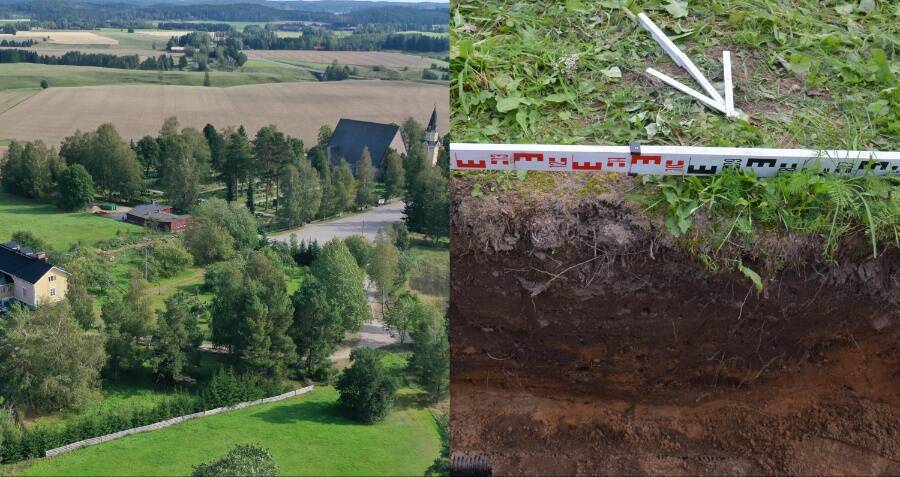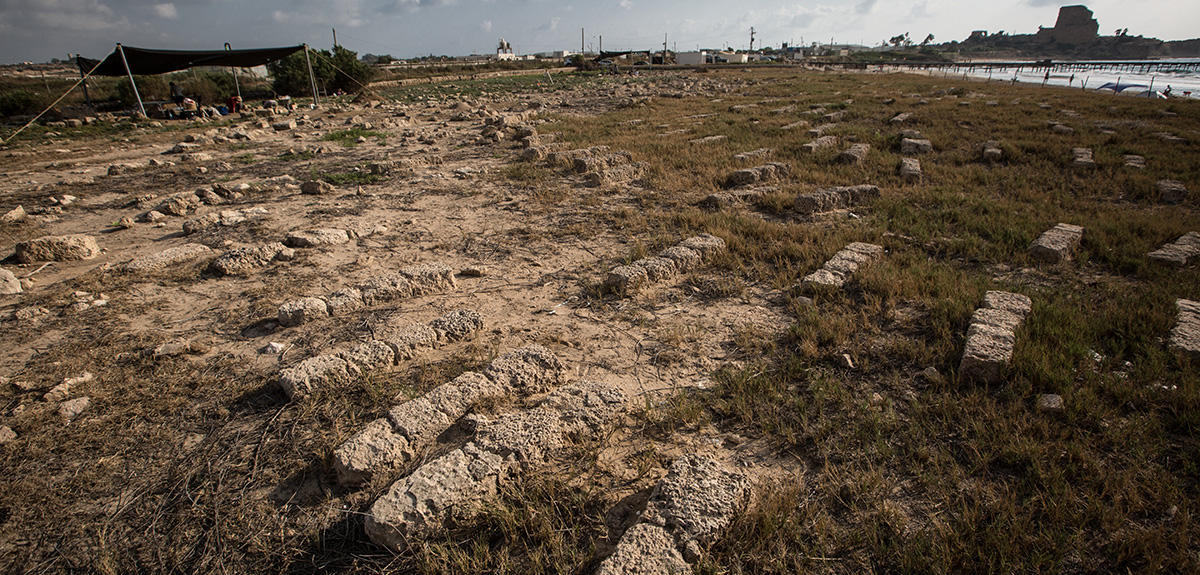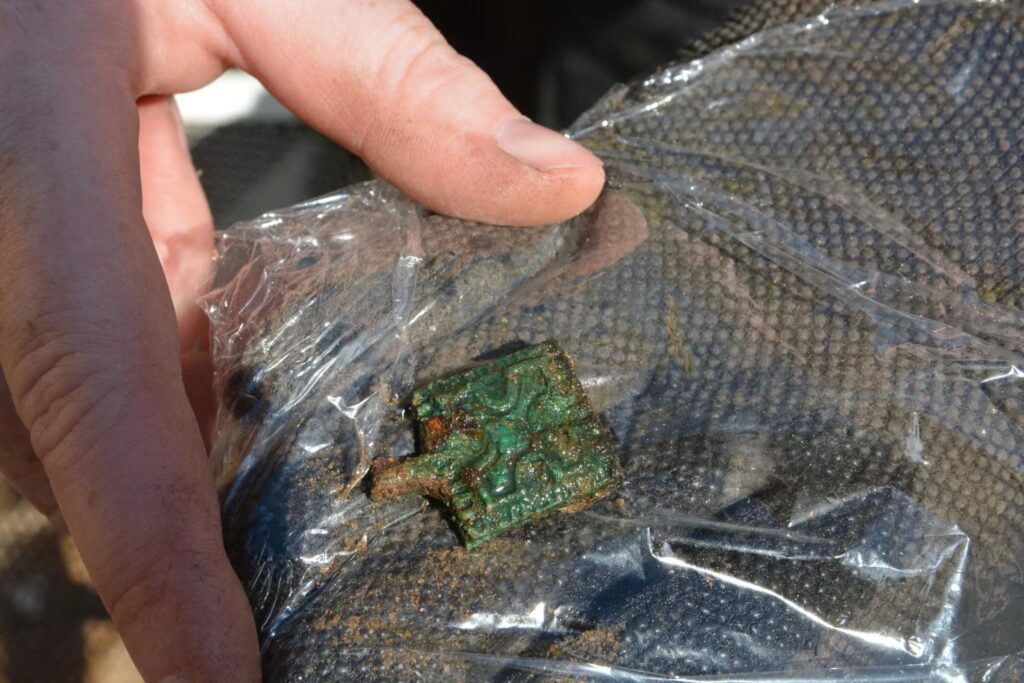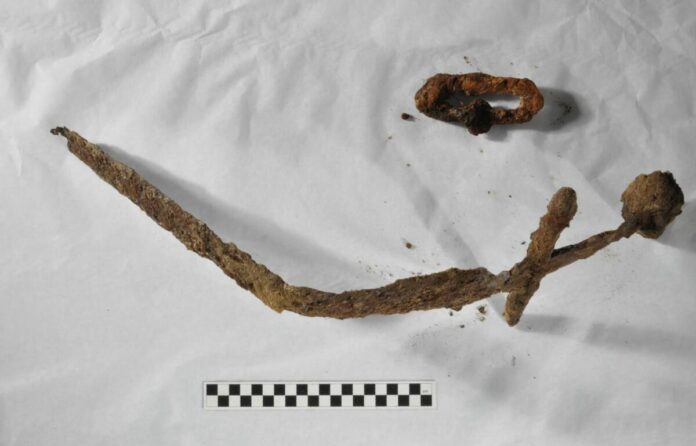A remarkable archaeological find has emerged in the municipality of Salo, Finland, unveiling a significant Crusader-era grave field near the medieval stone church of Pertteli. This discovery, initiated by a landowner’s chance encounter with an ancient iron sword, has led to an extensive excavation revealing numerous graves and historical artifacts. The findings offer a glimpse into Finland’s distant past, shedding light on the region’s history during the Crusades.
The Initial Discovery

The landowner in Salo was overseeing excavation work for geothermal pipe installation when he noticed an iron object protruding from a mound of dirt. Upon pulling it out, he discovered a nearly complete sword. This discovery was promptly reported to archaeologists from the University of Turku and the Turku Museum Centre. The sword, characterized by a bent blade, a straight bar-like hilt, and a three-sided oval pommel, is believed to date back to between AD 1050 and 1150, during the Crusader Era. Alongside the sword, fragments of its scabbard, additional blade pieces, iron objects, and human remains were unearthed.
The Crusader-Era Grave Field

Further examination of the site led to the discovery of an extensive grave field, located near the medieval church of Pertteli. This site includes eight graves, with estimates suggesting the presence of dozens, possibly up to two hundred, more burial sites. One of the most notable finds is a leather belt adorned with thirty square rosette-patterned bronze ornaments, complete with a buckle, end buckles, strap dividers, and preserved leather parts. This grave field is the first confirmed discovery dating to the end of the Iron Age in the Salonjoki river valley, according to the University of Turku.
Historical Significance of the Find

The Crusader Era in Finland marks the period when the First Swedish Crusade purportedly introduced Christianity to Finland. Although the existence of this crusade is debated among academics due to a lack of archaeological evidence and late 13th-century written sources, the discovery of these graves provides significant insights into the era. The Crusades, traditionally considered to have begun in the 12th century, involved the Swedish Crown and the Catholic Church’s efforts to expand their control over parts of Finland.
The University of Turku’s press announcement highlights the importance of this find, noting that cremation cemeteries from the Crusader era are less known in Finland compared to earlier cremation cemeteries. This discovery, featuring Christian burial customs, also suggests the presence of a much earlier church organization in the area than previously believed. The location near the medieval stone church implies that the Pertteli parish might have been established earlier than the 15th-century founding of the Uskela chapel.
Ongoing Research and Future Prospects

The research on the discovered artifacts and remains is an extensive and meticulous process that is expected to continue until at least the beginning of 2024. Archaeologists and researchers are employing a variety of advanced techniques to analyze the findings. Radiocarbon dating is being conducted on the bones recovered from the site to determine their exact age and provide a more precise timeline of the grave field’s use. Additionally, the leather belt and a knife sheath, both significant finds, are undergoing x-ray analysis. This process will reveal detailed information about their construction and any hidden features not visible to the naked eye.
Further studies will involve a thorough examination of the belt’s bronze ornaments and their intricate rosette patterns, which could offer insights into the craftsmanship and cultural influences of the period. Conservation efforts are also underway to preserve these delicate artifacts for future study and display. These ongoing investigations aim to uncover deeper insights into the historical context and significance of the grave field, shedding light on burial practices, social structures, and daily life during the Crusader Era in Finland. The results of this research are expected to contribute significantly to our understanding of this fascinating period in Finnish history.
Conclusion
The discovery of the Crusader-era grave field and sword in Salo, Finland, marks a significant milestone in understanding the region’s history during the Crusades. The extensive grave field, the well-preserved artifacts, and the implications of early Christian burial customs offer a rich tapestry of historical data. As research continues, these findings will undoubtedly enhance our knowledge of Finland’s past and its integration into the broader historical narratives of the Crusades and medieval Europe.
